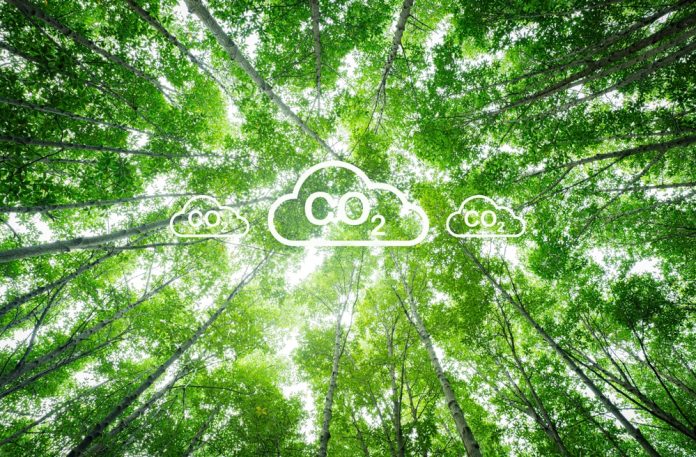A groundbreaking study led by the University of Oxford’s Department of Physics sheds new light on the role of natural carbon sinks like forests and oceans in the fight against climate change.
While these natural systems are critical in stabilising global temperatures, researchers warn that relying on carbon sinks to offset fossil fuel emissions will not halt global warming.
Instead, they emphasise the need for a more robust strategy—geological net zero.
What are natural carbon sinks?
Natural carbon sinks are ecosystems that absorb more carbon dioxide (CO2) than they emit, helping to regulate the Earth’s climate.
Forests, oceans, wetlands, and soil are key players in this process, pulling CO2 from the atmosphere through biological and chemical mechanisms. For example, trees sequester carbon during photosynthesis, while the oceans dissolve CO2 into their waters.
Although these natural carbon sinks help mitigate climate change, their capacity is limited. Factors such as deforestation, land degradation, and rising ocean temperatures reduce their effectiveness.
Moreover, these carbon sinks cannot compensate for the ongoing, large-scale emissions from human activities, making them an insufficient solution on their own.
The misconception of net zero and natural carbon sinks
The concept of net zero, developed over 15 years ago, originally excluded natural carbon sinks from its definition of human-induced CO2 emissions.
However, governments and corporations often count on these sinks to offset fossil fuel use, creating a misleading perception of climate progress.
The study highlights a critical issue with current emissions accounting rules: they equate fossil fuel emissions with the natural drawdown of CO2.
This allows countries or companies to claim net zero while still contributing to ongoing warming. For instance, a nation might rely heavily on forests to balance its emissions, neglecting the fact that these natural carbon sinks only temporarily store carbon and are vulnerable to degradation.
Dr Glen Peters of the CICERO Center for International Climate Research, a study co-author, explained: “Countries report both emissions and removals, but using all removals in climate targets is a recipe for continued warming.
“Natural carbon sinks currently clean up around half our annual emissions for free, but this ecosystem service must be kept separate from the fossil emissions driving climate change. Relabelling things will not stop global warming.”
The case for geological net zero
The researchers advocate for a clearer distinction between emissions reductions and reliance on natural carbon sinks.
They propose ‘geological net zero’ as a solution, which involves permanently storing one tonne of CO2 in geological formations for every tonne emitted.
This approach directly addresses fossil fuel emissions and prevents them from lingering in the atmosphere.
However, achieving geological net zero is no small feat. It requires significant investment in carbon capture and storage technologies and, more importantly, a drastic reduction in fossil fuel use. Without this shift, the burden falls on natural carbon sinks, leaving the planet at risk.
Professor Myles Allen of the University of Oxford’s Department of Physics, who led the study, added: “We are already counting on forests and oceans to mop up our past emissions, most of which came from burning stuff we dug out of the ground.
“We can’t expect them to compensate for future emissions as well. By mid-century, any carbon that still comes out of the ground will have to go back down to permanent storage. That’s geological net zero.”
Protecting sinks without overreliance
While natural carbon sinks cannot solve global warming alone, their protection is essential. Forest conservation, sustainable land management, and ocean health initiatives ensure these ecosystems continue to absorb CO2 and moderate climate impacts.
The study also points to the ethical responsibility of high-emitting countries to acknowledge their historical carbon contributions and their reliance on global natural sinks.
The call to action is clear: governments and corporations must reduce emissions at the source and clarify the extent to which they depend on natural sinks in their climate strategies.
Only by combining emissions reductions, permanent CO2 storage, and natural sink protection can we hope to achieve meaningful progress toward a stable climate.





